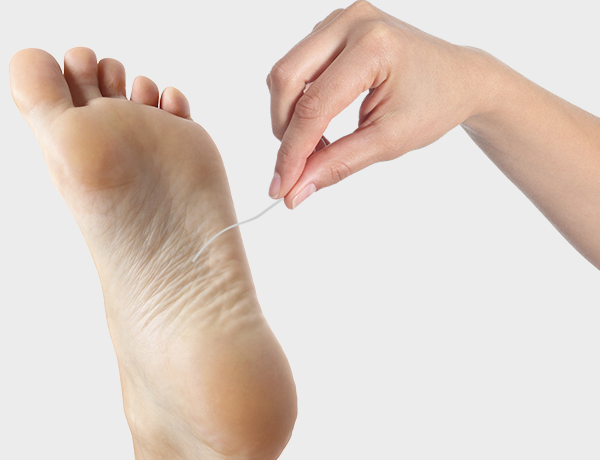 The Treat Your Feet series continues this week with another pillar of diabetes foot care. On the heels of our first in-depth post about Clean feet, this week’s topic is how to Cover your feet for optimal safety and protection.
The Treat Your Feet series continues this week with another pillar of diabetes foot care. On the heels of our first in-depth post about Clean feet, this week’s topic is how to Cover your feet for optimal safety and protection.
Committing to diabetes self-management does take some change and preparation. When it comes to blood glucose levels, such changes might come in thinking twice about what or how much to eat. With foot care, a little extra effort may be called for, but understanding the needs of your feet and securing the proper tools can make it easier to give them valuable support and protection.
Foot Safety
Diabetes can lead to diabetic neuropathy, a condition that damages nerves in the feet and reduces sensation. Additionally, this condition may come with changes in blood circulation, with less blood reaching the feet. This has two consequences for patients with diabetes: first, the skin of the feet may be at greater danger of cuts or other injuries, and second, if such wounds occur, the patient may not feel them. Wounds that go unchecked and untreated increase the risk of infection and other complications, so it is important for patients with diabetes to safeguard their feet at all times.
Thus, when it comes to footwear with diabetes, the cardinal rule is to keep feet completely covered, at all times. Open-toed shoes and sandals are not safe options. Patients should also take care never to go barefoot, whether at the beach or just around the house. Even in the shower, feet should always be safe and snug in proper footwear.
Choosing Socks and Shoes
But what constitutes ‘proper’ footwear? These tips can help you know what to look for, what to avoid, and how to surround yourself with neuropathy-friendly options.
- Always start with clean socks. Wearing shoes without socks is a recipe for developing blisters or sores, so with any shoe, be sure to wear socks, stockings, or nylons. Lightly padded socks made of natural fibers (e.g. cotton, wool, or a cotton-wool blend) are best. When trying on shoes, wear the type of sock that you’ll be pairing with that shoe, and change your socks daily.
- Avoid irritants. Seams (in socks or shoes), socks that are too tight, pointed toes, high heels, and rough patches or foreign objects inside shoes can rub your feet the wrong way, causing damage. Choose lightly padded socks made of natural fibers (e.g. cotton), and check inside your shoes every time before putting them on. Don’t wear new shoes for longer than an hour at a time, until they are broken in.
- Be choosy about shoe make and fit. Your doctor or foot specialist can give you advice on what to look for in a shoe, or may instruct you to wear a particular kind of special shoe. In general, look for shoes with a leather upper and a stiff sole. They should be at least as wide as your feet, and have at least half an inch of space beyond the end of your longest toe. If you have questions, you can ask your doctor or foot specialist to check the fit.
When you find foot solutions that work, like a superior pair of comfortable socks, consider getting multiples if you can. If you take care to have neuropathy-friendly foot solutions available for any occasion, keeping feet adequately covered can become second nature. Stay tuned for our next installment, when we’ll Circulate some good advice for maintaining blood flow to the feet.
{{cta(‘44893e99-97c2-42f8-936a-6798128c709b’)}}

